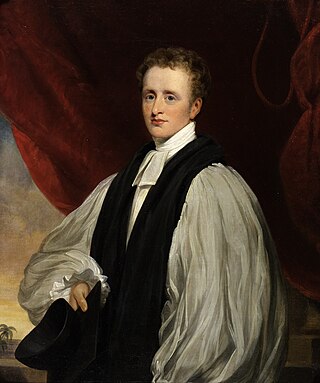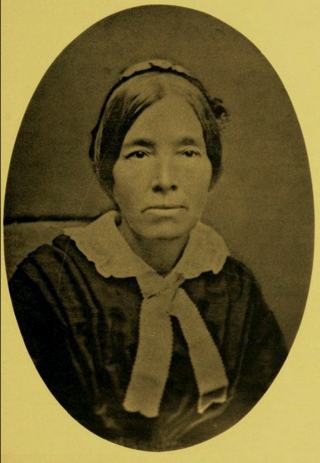
"Love Divine, All Loves Excelling" is a Christian hymn by Charles Wesley on Christian perfection. Judging by general repute, it is among Wesley's finest: "justly famous and beloved, better known than almost any other hymn of Charles Wesley." Judging by its distribution, it is also among his most successful: by the end of the 19th century, it is found in 15 of the 17 hymn books consulted by the authors of Lyric Studies. On a larger scale, it is found almost universally in general collections of the past century, including not only Methodist and Anglican hymn books and commercial and ecumenical collections, but also hymnals published by Reformed, Presbyterian, Baptist, Brethren, Seventh-day Adventist, Lutheran, Congregationalist, Pentecostal, and Roman Catholic traditions, among others including the Churches of Christ. Specifically, it appears in 1,328 of the North American hymnals indexed by the online Dictionary of North American Hymnology, comparable to Newton's "Amazing Grace" (1,036), Wesley's "O for a Thousand Tongues" (1,249), and Watts' "When I Survey the Wondrous Cross" (1,483), though still well short of Toplady's "Rock of Ages" (2,139) or Wesley's own "Jesu, Lover of my Soul" (2,164).

"Be Thou My Vision" is a traditional Christian hymn of Irish origin. The words are based on a Middle Irish poem that has traditionally been attributed to Dallán Forgaill.

"For All the Saints" was written as a processional hymn by William Walsham How, who was ultimately the Anglican Bishop of Wakefield. The hymn was first printed in Hymns for Saints' Days, and Other Hymns, by Earl Nelson, 1864.

"We Gather Together" is a Christian hymn of Dutch origin written in 1597 by Adrianus Valerius as "Wilt heden nu treden" to celebrate the Dutch victory over Spanish forces in the Battle of Turnhout. It was originally set to a Dutch folk tune. In the United States, it is popularly associated with Thanksgiving Day and is often sung at family meals and at religious services on that day.
"For the Beauty of the Earth" is a Christian hymn by Folliott S. Pierpoint (1835-1917).

"Holy, Holy, Holy! Lord God Almighty!" is a Christian hymn written by the Anglican bishop Reginald Heber (1783–1826).

Psalm 74 is the 74th psalm of the Book of Psalms, beginning in English in the King James Version: "O God, why hast thou cast us off for ever?". In the slightly different numbering system used in the Greek Septuagint and Latin Vulgate translations of the Bible, this psalm is Psalm 73. In Latin, it is known as "Ut quid Deus reppulisti in finem iratus". Subheaded a maschil or contemplation, and a community lament, it expresses the pleas of the Jewish community in the Babylonian captivity. It is attributed to Asaph.

"The Hymn of Joy" is a poem written by Henry van Dyke in 1907 in being a Vocal Version of the famous "Ode to Joy" melody of the final movement of Ludwig van Beethoven's final symphony, Symphony No. 9.
"As with Gladness Men of Old" is an Epiphany hymn, written by William Chatterton Dix on 6 January 1859 (Epiphany) while he was ill in bed. Though considered by many as a Christmas carol, it is found in the Epiphany section of many hymnals and still used by many churches. The music was adapted by William Henry Monk in 1861 from a tune written by Conrad Kocher in 1838. The hymn is based on the visit of the Biblical magi in the Nativity of Jesus.
The "Great Four" are four hymns widely popular in Anglican and other Protestant churches during the 19th century.
"God of Our Fathers" is a 19th-century American Christian hymn, written in 1876 to commemorate the 100th anniversary of the United States Declaration of Independence.
"Come Thou Almighty King" is a Christian hymn of unknown authorship, which is often attributed to Charles Wesley.

"Ride On, Ride On in Majesty!", also titled "Ride On! Ride On in Majesty", is a Christian hymn written by Henry Hart Milman in 1820. It is a Palm Sunday hymn and refers to Matthew 21:1–17 and Jesus' triumphal entry into Jerusalem.

"And Can It Be That I Should Gain?" is a Christian hymn written by Charles Wesley in 1738 to celebrate his conversion, which he regarded as having taken place on 21 May of that year. The hymn celebrates personal salvation through the death and resurrection of Jesus, and is one of the most popular Methodist hymns today.
Edward Wilton Eddis was a poet and prophet in the Catholic Apostolic Church at Westminster, London and co-author of the Hymns for the Use of the Churches, the hymnal of the Catholic Apostolic Church.
Phoebe Hinsdale Brown was one of the first notable American woman hymnwriters, and the first American woman to write a hymn of wide popularity, "I love to steal awhile away".
Lady Lucy Whitmore was an English noblewoman and a hymn writer.
A. Flowerdew was an English teacher, religious poet and hymnist. Her main work was Poems on Moral and Religious Subjects (1867). She died in 1830.

Sarah White Livermore (1789–1874) was a 19th-century American teacher and writer of fugitive poetry and prose. She was a lyricist of several hymns, and a magazine writer as well. Livermore spent most of her life teaching school. With Phebe Abbot, she established a Sunday school in Wilton, New Hampshire in May 1816, connected with the Congregational church. It was one of the first, if not the first, in the U.S. to be devoted especially and wholly to religious instruction.

Mary Fawler Maude (1819–1913) was an English village pastor's wife who wrote several religious books and hymns. She is best known for a confirmation hymn, "Thine for ever! God of love", written in 1847.










